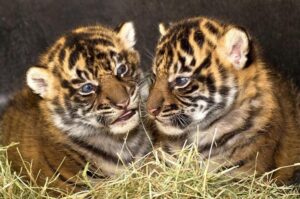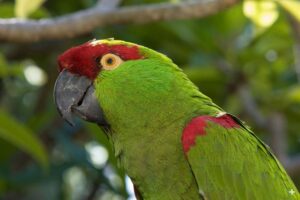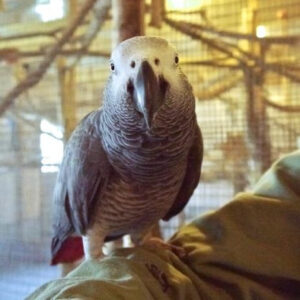
Wild Animals Belong in the Wild
Wild animals and humans were created to coexist on planet Earth, but not to interact. There is a distinct difference between coexisting and interacting. Coexisting means “to exist together or at the same time” or “to live in peace with each other.” Interacting means “to act together” or “to come together and have an effect on each other.” When wild animals are brought into homes, and humans begin living and interacting with them daily, they are now considered exotic pets. The problem is, owning exotic pets doesn’t take the wild side out of them.
EXOTIC ANIMALS DON’T BELONG IN OUR HOMES
An exotic pet is an “unusual species that is not native to the area and an animal you wouldn’t expect to see around a house or cage.” Popular exotic pets include tigers, capuchin monkeys, sugar gliders, hedgehogs, and pythons. Despite the price of owning and acquiring these animals, humans continue to be intrigued by keeping them as pets.
The types of exotic pets and laws surrounding their ownership of them vary across the United States. There are no laws regarding having big cats as pets in Alabama, Nevada, North Carolina, Wisconsin, Delaware, and Oklahoma. It is illegal to have sugar gliders as pets in California, Massachusetts, Alaska, Minnesota, New Mexico, Hawaii, and Utah. Hedgehogs are illegal to have as pets in California, Georgia, Hawaii, and Pennsylvania.
These animals are very beautiful and majestic, which naturally attracts the human eye. Sometimes from afar, they look fluffy, soft, cute, and friendly, but that picture changes once you bring one home.
SUGAR GLIDERS
Sugar gliders are a common exotic pet found in the United States and the United Kingdom. They have short sharp claws they use to grip and climb. When handled by humans, the claws can be painful. Owners take it upon themselves to trim their claws but can cut off the fingertip of the sugar glider if not careful. Without claws, sugar gliders would be unable to climb, which is a critical part of their movement. Since they are nocturnal creatures, your sleep schedule may be altered and disrupted.

Source: San Diego Zoo
TIGERS
Tigers are usually acquired as pets when they are cubs. People tend to forget; they don’t stay that small forever. Unlike some other exotic pets, owning tigers as pets can be deadly. Due to their strength and size, a tiger can easily kill a person. According to National Geographic, “Over the last century, tigers have killed more people through direct attack than any other mammal.” Not only does a tiger prove to be a deadly pet, the amount of space they need to live is much larger than a house or a big yard. The stress that builds up from living in such a constrained space can lead to an attack.

Source: San Diego Zoo Wildlife Alliance
For an animal to be considered a pet, it must be accustomed to living and interacting with humans over several years, where they now depend on humans to survive and thrive. Dogs and house cats make excellent pets and companions. They rely on humans to provide them with food, care, and comfort. Keeping dogs and house cats as pets does not interfere with their wild behaviors or instincts. They continue to rely on human interaction to live.
WHY BIRDS BELONG IN THE WILD
Birds, on the other hand, can survive without human interaction, which means they shouldn’t be considered an addition to your family. According to the 2023-2024 APPA National Pet Owners Survey, 6.1 million households in the United States have birds as pets and according to the National Humane Educational Society, there are approximately 20 million birds kept as pets in the United States. Birds in the parrot family, which include macaws, parrots, cockatoos, cockatiels, and budgies are the most popular. Their unique personalities, colors, and talkative capabilities are characteristics that draw people to keep them as pets. Along with being beautiful and interesting, people who keep these birds as pets underestimate their intelligence.
Naturally, these birds are social creatures therefore, they require constant socialization as well as stimulation to stay mentally and emotionally healthy. In the wild, these birds would be able to produce natural sounds, roam, fly, and socialize with other birds, which is the ideal environment. When confined in households, their capability to carry out their natural behavior is compromised, often resulting in behavioral problems. With a lifespan of about 80 years, the amount of commitment needed to care for these birds can be overwhelming and challenging.

Source: San Diego Zoo Wildlife Alliance
Foster Parrots and The New England Exotic Wildlife Sanctuary, founded in 1989, is a dedicated rescue for parrots and other captive exotic animals that were surrendered or abused. The organization reports they receive between 900-1000 phone calls every year from owners who are unable or not interested in keeping their pet birds or other exotic animals.

“Pip” (Congo African Grey)
SUMMARY
It is natural to be mesmerized by animals in the wild. Their unique personality and color patterns are a sight to see. We all like to be different than one another but keeping exotic animals as pets isn’t a way to stand out. Those who have exotic pets do stand out as being self-centered, cruel, and ignorant. If standing out is so important, advocating for these animals and being a voice for change is a good way to start. Visiting accredited zoos provides an opportunity to see some of these animals in person and learn about different conservation programs that help save species in danger of extinction.
Many wild animals that are kept as pets are constantly in a state of distress. Humans aren’t equipped to handle and keep a wild animal as a pet. The amount of care, time, and energy that these animals require is far beyond what any human can provide in their home. Under constant stress and lack of space, these animals become aggressive. It puts both the animal and the owner in danger which can cause serious injuries and even death. Wild animals were not born to be pets, therefore, our duty as animal lovers is to protect and respect them from afar.
Watch our video on the dark side of the exotic pet industry:
References
Animals as pets. (n.d.). BBC. https://www.bbc.co.uk/ethics/animals/using/pets.shtml
Coexist definition & meaning | Britannica dictionary. (n.d.). Encyclopedia Britannica | Britannica. https://www.britannica.com/dictionary/coexist
Interact definition & meaning | Britannica dictionary. (n.d.). Encyclopedia Britannica | Britannica. https://www.britannica.com/dictionary/interact
Latest exotic pet statistics in 2022 [Ownership & attacks]. (2022, June 14). Pawsome Advice. https://pawsomeadvice.com/pets/exotic-pet-statistics/
Malone, S. (2013, December 14). U.S. parrot rescuers struggle to keep up with unwanted birds. Reuters. https://www.reuters.com/article/oukoe-uk-usa-parrots/u-s-parrot-rescuers-struggle-to-keep-up-with-unwanted-birds-idUKBRE9BD05C20131214
Mission — Foster parrots — The New England exotic wildlife sanctuary. (n.d.). Foster Parrots — The New England Exotic Wildlife Sanctuary. https://www.fosterparrots.com/projects
Parrot. (n.d.). San Diego Zoo Animals & Plants. https://animals.sandiegozoo.org/animals/parrot
Pet industry market size, trends & ownership statistics. (n.d.). American Pet Products Association. https://www.americanpetproducts.org/press_IndustryTrends.asp
Pip — Foster parrots — The New England exotic wildlife sanctuary. (n.d.). Foster Parrots — The New England Exotic Wildlife Sanctuary. https://www.fosterparrots.com/pip
Roth, A. (2019, January 30). Don’t be fooled by social media—wild animals make terrible pets. National Geographic. https://www.nationalgeographic.com/animals/article/cute-wild-animals-make-terrible-pets
Schwingle, N. (2022, January 5). Why you should not buy a pet bird. One Green Planet. https://www.onegreenplanet.org/animalsandnature/why-you-should-not-buy-a-pet-bird/
Sugar glider. (n.d.). San Diego Zoo Animals & Plants. https://animals.sandiegozoo.org/animals/sugar-glider
Tiger. (n.d.). San Diego Zoo Animals & Plants. https://animals.sandiegozoo.org/animals/tiger
Why are there so many birds in rescues? (2021, January 5). National Humane Education Society. https://www.nhes.org/why-are-there-so-many-birds-in-rescues/